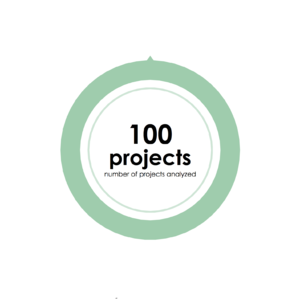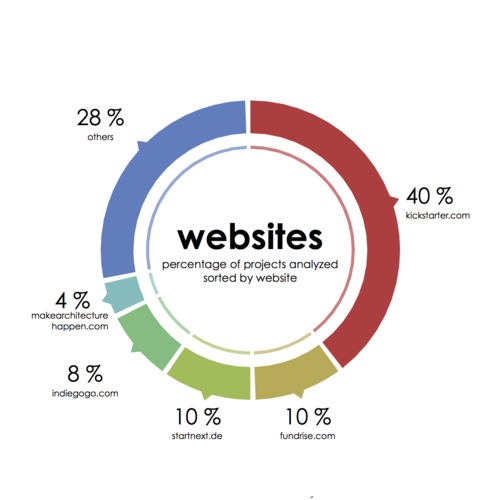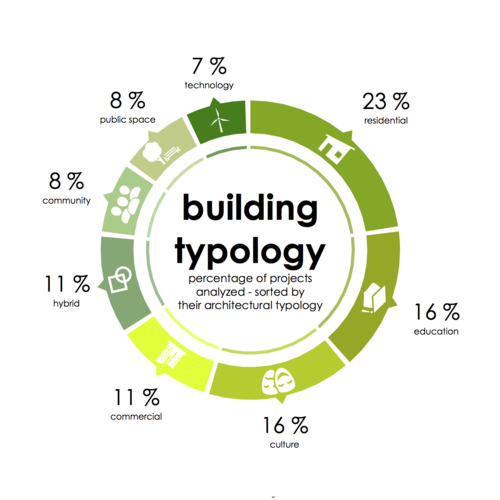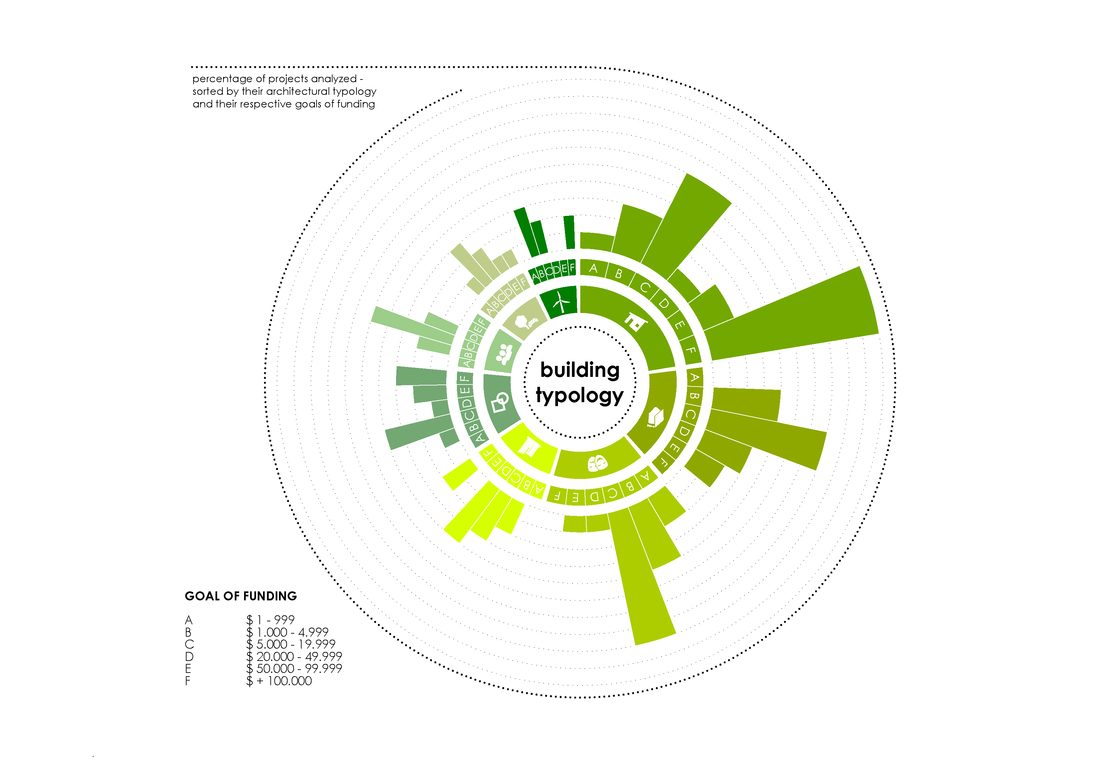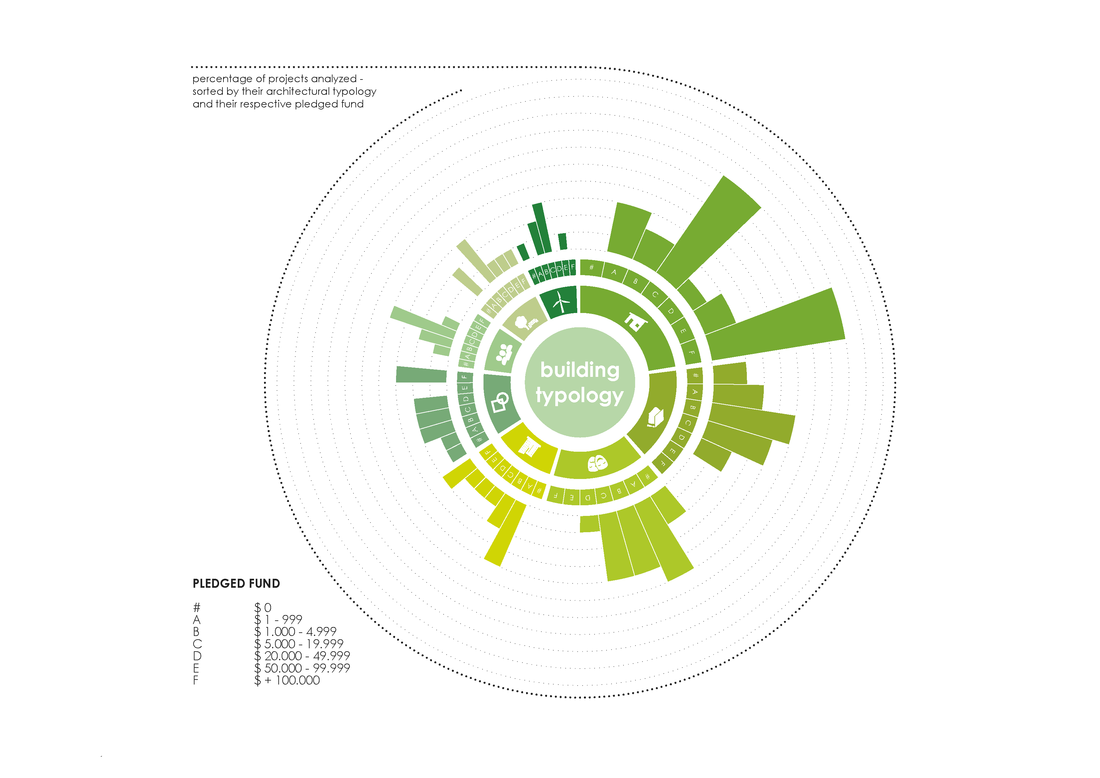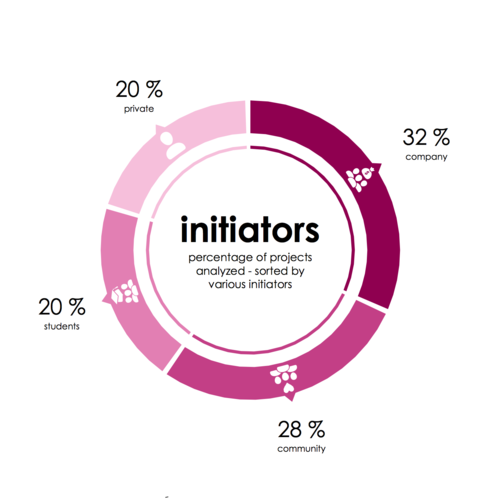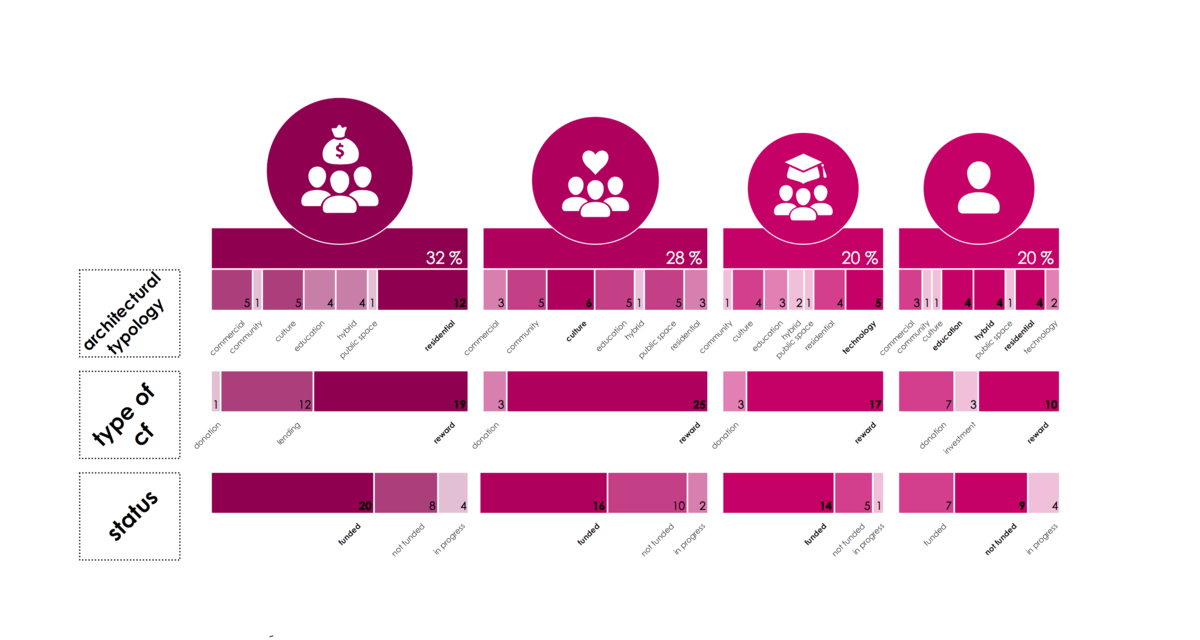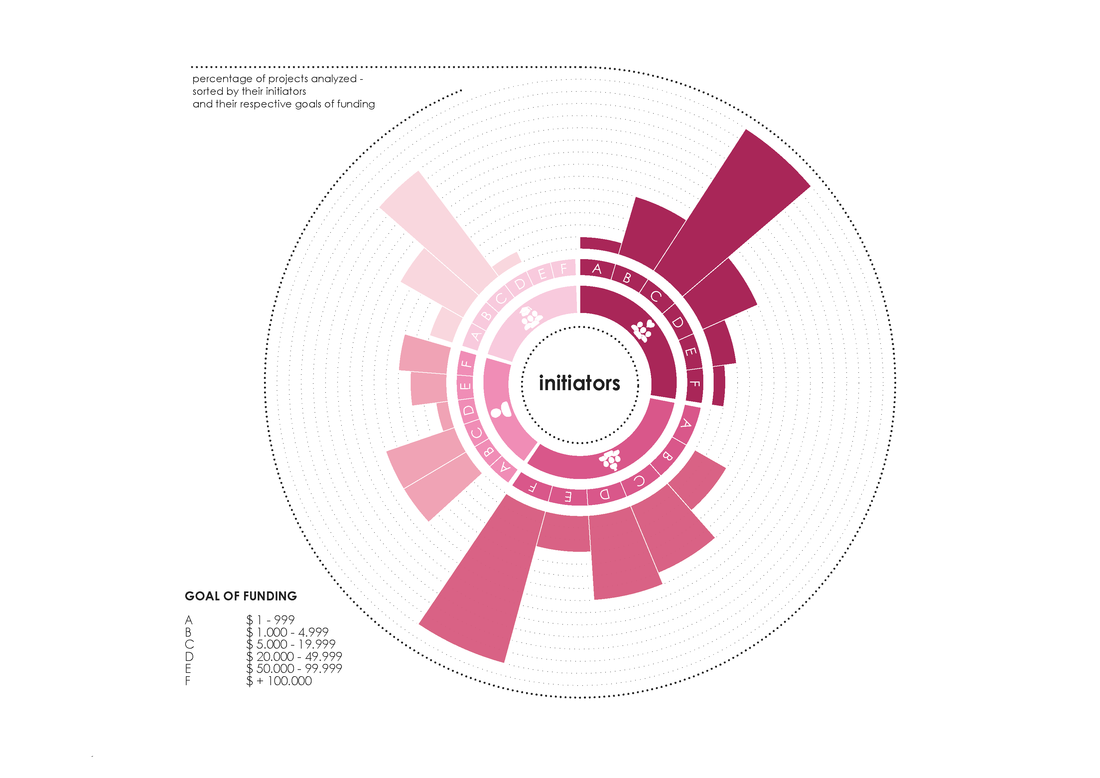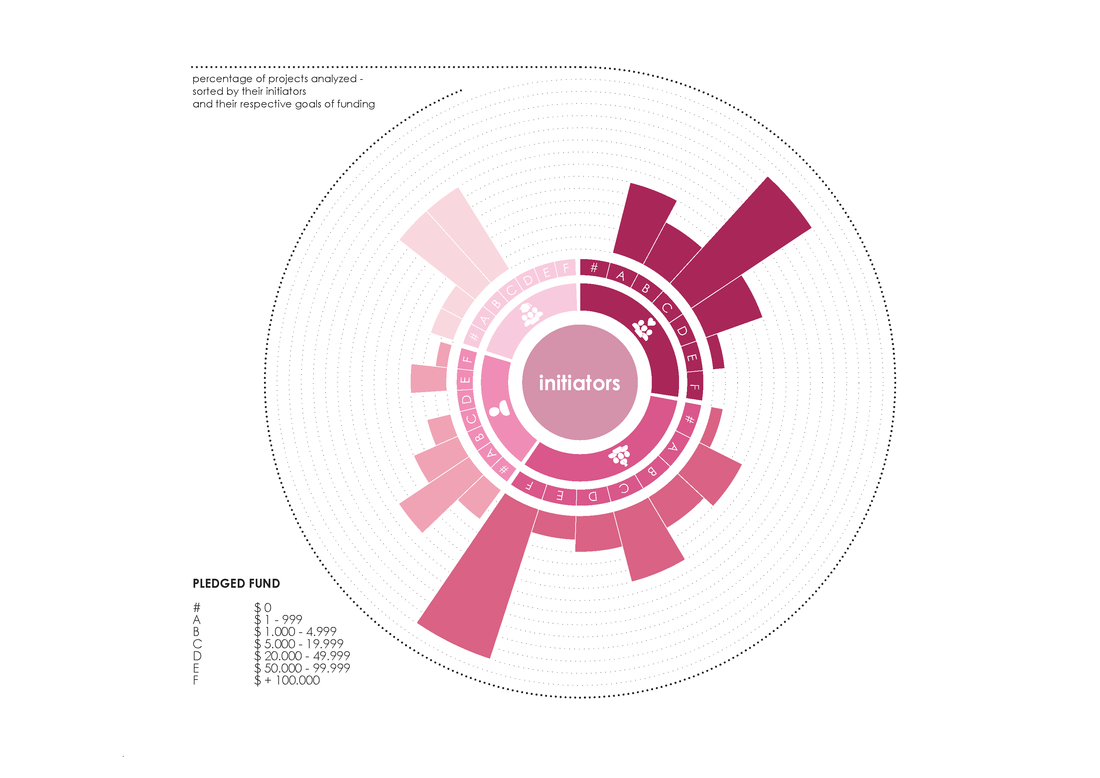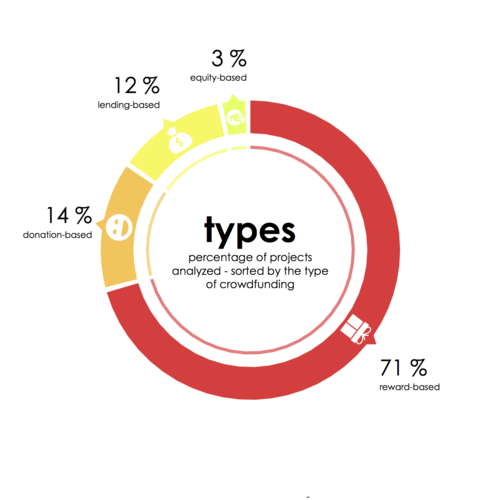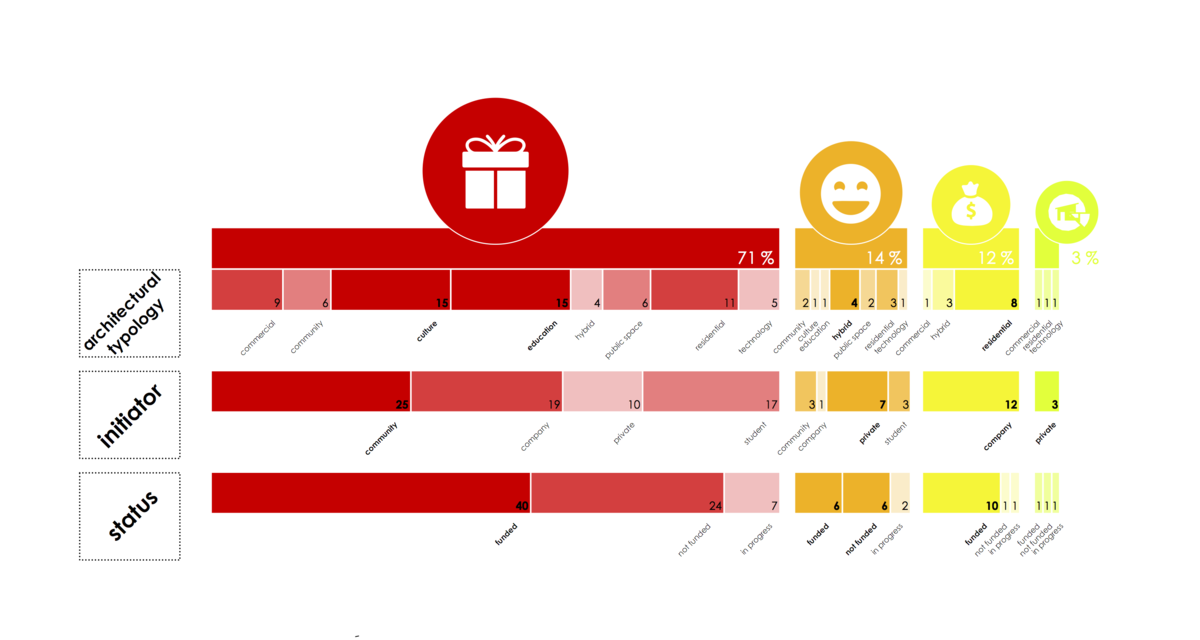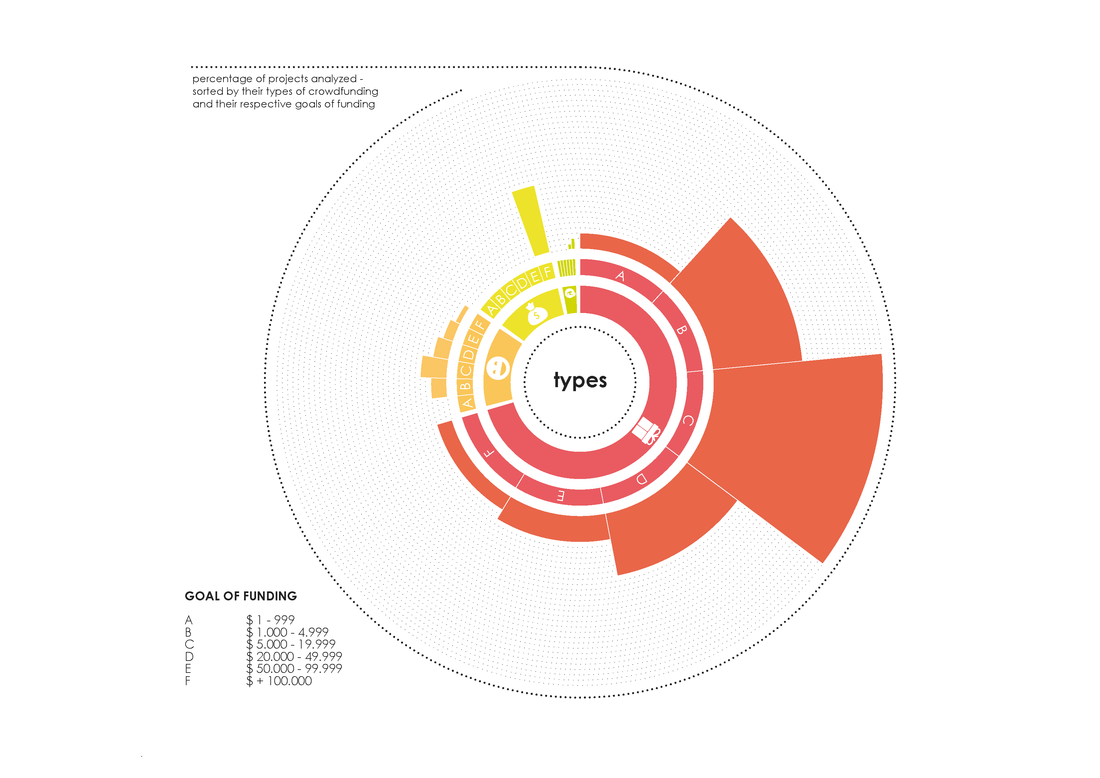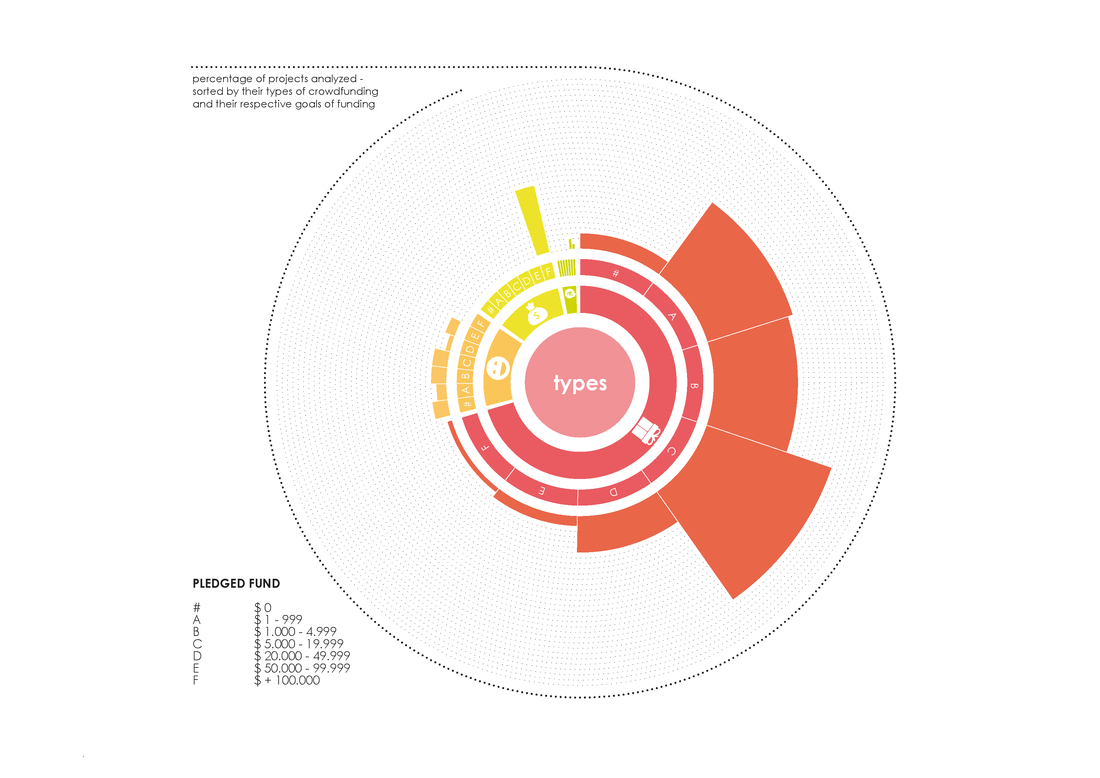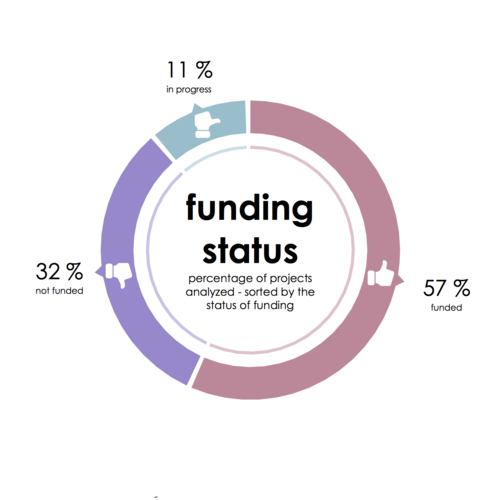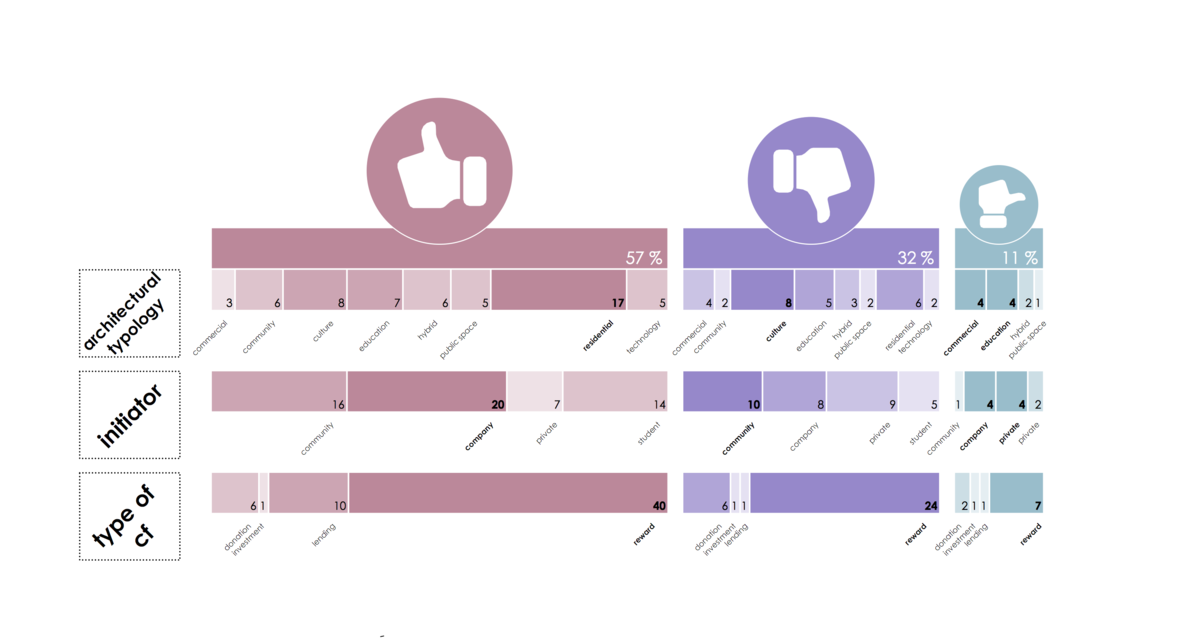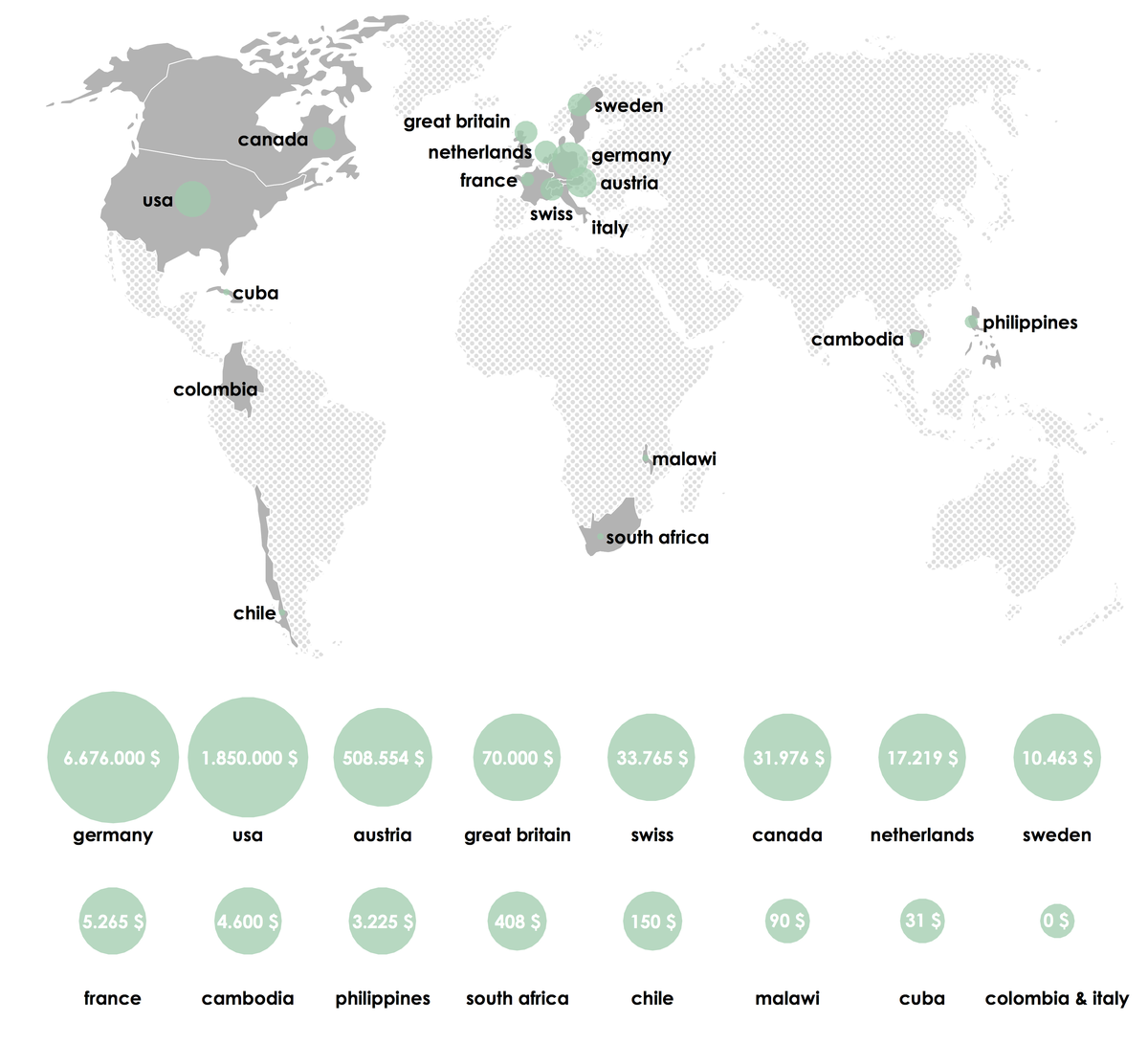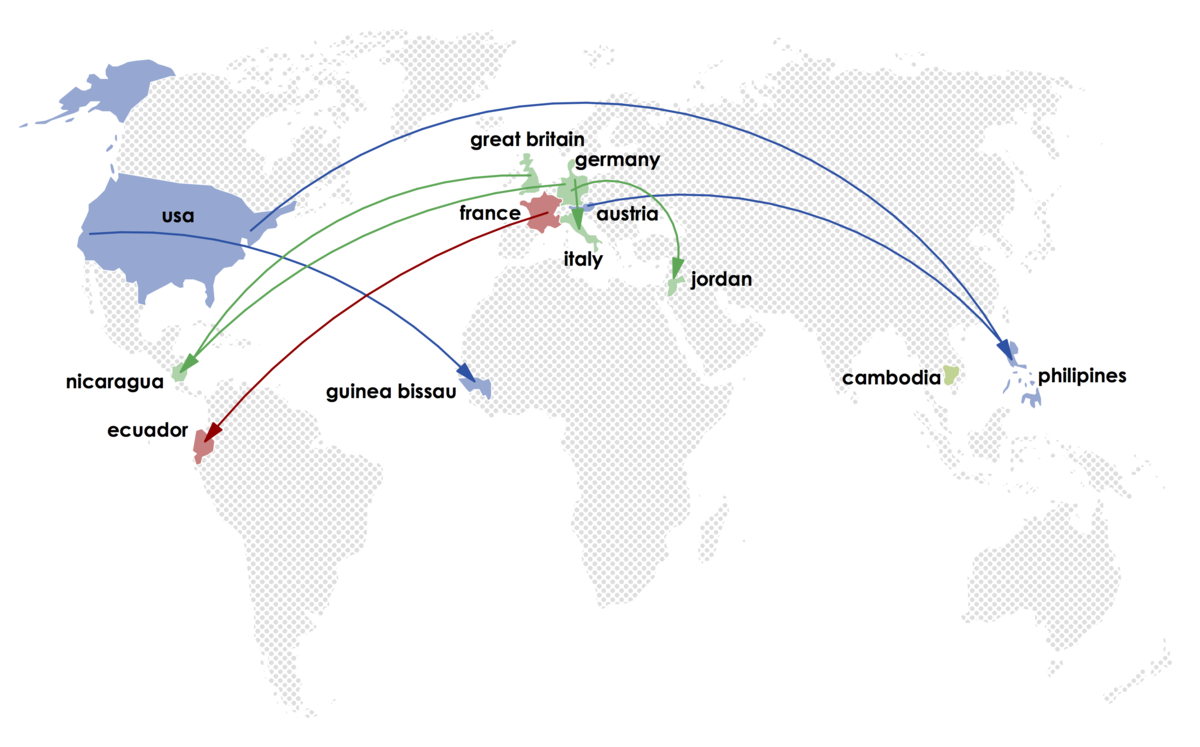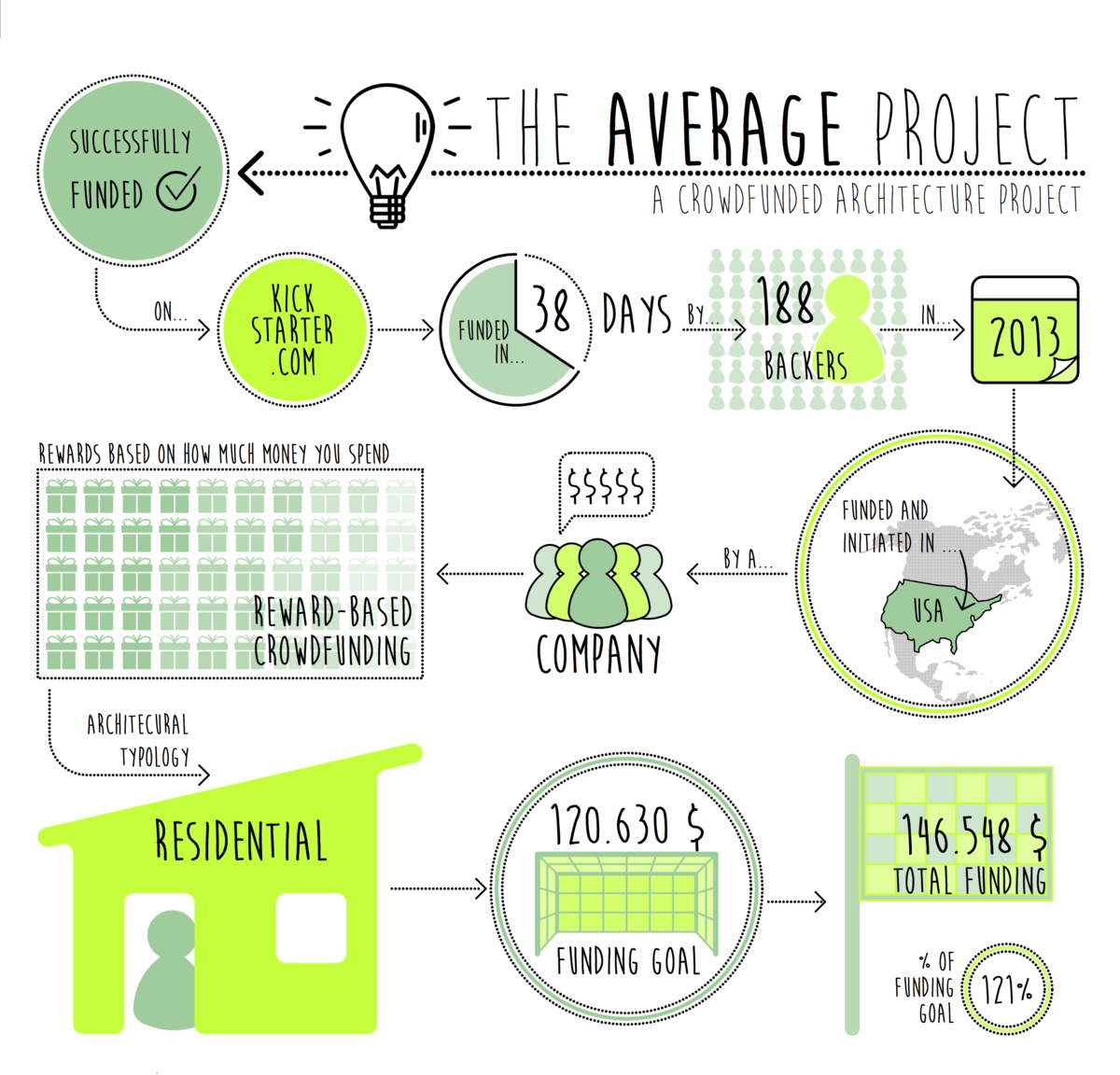Difference between revisions of "100 projects of crowdfunding in architecture"
(→initiators) |
(→building typologies) |
||
| Line 91: | Line 91: | ||
The following two circle shaped graphics show quite easy, how much money is searched (first graphic) and provided (second graphic) for in the different types of typology. The amounts of money have been divided into several groups and listed in the graphic how often they occur in which typology. | The following two circle shaped graphics show quite easy, how much money is searched (first graphic) and provided (second graphic) for in the different types of typology. The amounts of money have been divided into several groups and listed in the graphic how often they occur in which typology. | ||
| − | [[File:Building typologies zeile.png| | + | [[File:Building typologies zeile.png|1200px]] |
[[File:Fund bulding typologies.png|1100px]] | [[File:Fund bulding typologies.png|1100px]] | ||
[[File:Pledged building typologies.png|1100px]] | [[File:Pledged building typologies.png|1100px]] | ||
Revision as of 11:41, 15 December 2014
Crowdfunding, in architectural context in particular, is a quite new development. People have the chance to take part in the process of planing or the realisation of architectural projects, to bring in their ideas and provide money to support a cause they care about. It can been seen as a new tool to create a new built environment for themselves or others in need.
The research took place from October to November 2014. The analysis, based on one hundred architectural projects, illustrates who participates, where the projects take place, what are the most common funding types are, how much money is provided and which building typologies are being developed and built. The research has been summarised in an excel-list and afterwards sorted and interpreted in sub items. This list is a snapshot representativ for currently funded, not funded and on going projects.
Contents
[hide]websites
The projects have been selected from the following websites:
- 40 projects - kickstarter.com
- 10 projects - fundrise.com
- 10 projects - startnext.de
- 4 projects - makearchitecturehappen.com
- 3 projects - fundedbyme.com
- 2 projects - 100-days.com
- 2 projects - kisskissbankbank.com
- 2 projects - visionbakery.com
- 2 projects - spacehive.com
- 2 projects - all-zesamme.de
- 2 projects - crowdfunding.at
- 1 project - kapitalfreunde.de
- 1 project - crowdcube.com
- 1 project - globalgiving.org
- 1 project - gofundme.com
- 1 project - projektstarter.ch
- 1 project - rockethub.com
- 1 project - sponsume.com
- 1 project - 1000x1000.at
- 1 project - wemakeit.com
- 1 project - companisto.com
- 1 project - nordstarter.org
As shown in the graphic, most architectural projects were found on kickstarter.com, which also depends on the fact, that kickstarter.com is the biggest and most known international website for crowdfunding projects in general. Probably the most known German website is startnext.de.
Projects on websites, which are more visited frequently, tend to be funded more often, because the chance the get more backers is obvious. Most of the time the big websites are also more clearly structured, so you can find the informations you need very quickly. This could also be a reason, why backers spend their money on this websites, because the feel more save or included.
Fundrise.com is a special case. It‘s only lending-based and most of the projects belong to the subdivison ‘residential‘. People lend their money in forms of loans to the initiator to realise the projects and get it refunded in a predeterminated period with a set interest rate.
icons
In all graphics icons were used to visualise and help understand the main statement quicker. This is the key to the meanings:
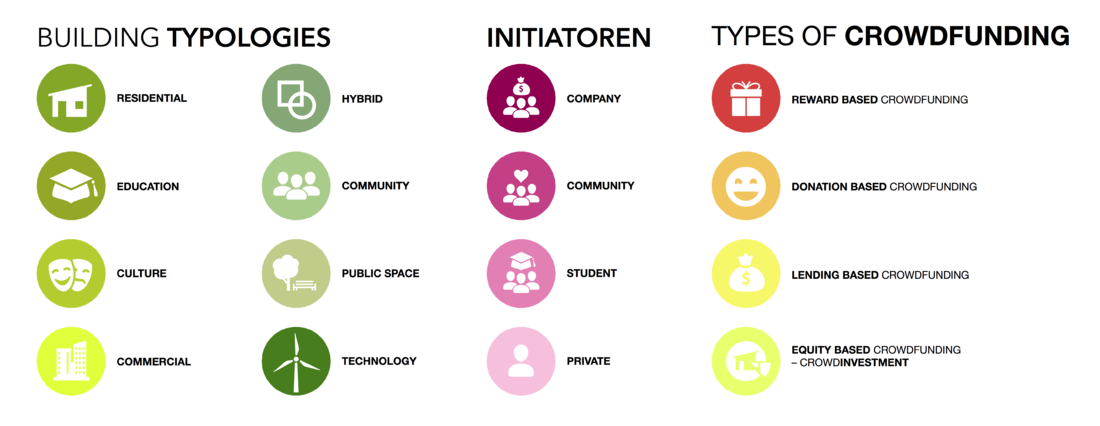
building typologies
Because the research only includes projects with an architectural content, it was highly important to see what kind of architectural typologies were mostly funded. The projects have been divided into following categories:
- Commercial - projects on any matter of business
- Community - projects provided for the community and their needs
- Culture - projects inluding all forms of fine and performing arts
- Education - projects aiming to spread knowledge
- Hybrid - projects with a mix-used purpose
- Public Space - projects taking place outdoors including landscape architecture
- Residential - projects including all forms of housing and living
- Technology - projects and ideas with the aim to upgrade buildings (e.g. sustainability)
The group of residential buildings is the most initiated followed equally by education and culture. Living is the part of architecture, which means something to all people. It‘s persistent and we all know, somebody is going to use it. You can read in the graphic below, that residential buildings are also very likely to be funded and it‘s the only typology (exept hybrid, which also includes residential in this case), where a lending-based type of crowdfunding exists. But still in every typology reward-based crowdfunding comes in first place.
For the ,good causes‘ like education, culture, community and even public space, the community itself tends to be the biggest group of initiators and seems to be quite good funded. For residential buildings a lot of companies start the projects, where also a quite high amount of money is involved. The following two circle shaped graphics show quite easy, how much money is searched (first graphic) and provided (second graphic) for in the different types of typology. The amounts of money have been divided into several groups and listed in the graphic how often they occur in which typology.
initiators
- company
- community
- private
- student
types of crowdfunding
There are four types of crowdfunding known so far:
- reward based crowdfunding: funders provide money in exchange for rewards based on levels that correspond to pledge amounts
- donation based crowdfunding: funders donate money to support a cause they care about
- lending based crowdfunding: funders provide money in the form of loans that they will get refunded over a pre-determined timeline with a set interest rate
- equity based crowdfunding / crowdinvestment: funders provide money in exchange of actual shares in a private company for capital
funding status
locations
This graphic gives an short overview of the initiators origin country and the maximum amount of money one has pledged for.
aid projects
In the research we came across quite a lot of aid projects - in numbers: 17 out of 100 - which are donation- or also even more often reward-based. Many rewards are thank-you-letters, thank-you-drawings or some other kind of appreciation, but they are still gifts. Most of them are residential buildings for refugees or other people in need. The initiators come from all groups but the majority of cases are still communities and students. Even though the research only took place on English or German speaking websites, the projects take place all over the world. The map visualises where the aid-projects take place and where their initiators come from.
The aid projects are mostly initiated in west-european countries and north america, while the actual projects take place in southern countries. If an aid project is for example initiated in the USA for the USA, it is not so likely to be funded, while for example Cambodia initiated and funded a project for themselves.
the average project
The average project is a fake project playing with the stereotypes of the research according to the excel-list. The graphic gives an overview what the most average project would look like and its characteristics.
